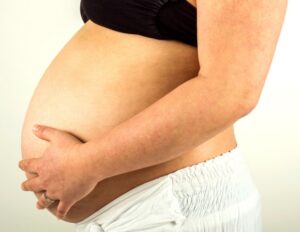Is managing emotions more effective than boosting wellbeing in curbing teens’ sweet tooth?

A recent study published in the International Journal of Behavioral Nutrition and Physical Activity explored whether emotion-driven impulsiveness or psychosocial well-being contribute more to healthy or unhealthy food choices. Their findings indicate that an intervention that targets emotion-driven impulsiveness would be slightly more effective in reducing adolescents’ consumption of sweet and high-fat foods.
Background
During childhood and adolescence, environmental factors play an important role in eating behaviors and food choices. During this age, individuals may respond to negative emotions and stress by eating unhealthy foods that activate the brain’s reward system and make them feel better. However, this emotion regulation strategy is maladaptive since it can lead to health outcomes such as obesity and other issues.
Emotional well-being has been associated with making healthier food choices. At the same time, more impulsive individuals may be more likely to consume unhealthy foods when they are stressed or upset. Thus, emotion-driven impulsiveness could mediate the relationship between emotional well-being and food-related decision-making. While these relationships have been explored using correlational studies, previous research could not establish a causal impact.
About the study
In this study, European researchers explored whether an increase in psychosocial well-being or a decrease in emotion-driven impulsiveness is more effective in improving food choices made by European adolescents. In a separate analysis, they also assessed to what extent impulsiveness mediates the effect of emotional well-being on food choices.
Researchers used data from the pan-European IDEFICS/I.Family cohort which collected data from eight countries in Europe. Four waves of data were collected between 2007 and 2021. Participants were 2-9 years old during the first wave of data collection in 2007-2008.
The sweet propensity score was calculated as the number of high-sugar food and drink items consumed each week and divided by the total number of food and drink items consumed, multiplied by 100. A similar formula was used for scoring fat propensity.
Emotion-driven impulsiveness was scored between 0 and 48, with a higher score indicating more impulsiveness when individuals experienced negative emotions. The ‘low’ exposure category was for individuals in the 12-20 range, while ‘moderate’ indicated a score of 21-28 and ‘high’ a score of 29-48. Psychosocial well-being included four subscales – relations to friends, family life, self-esteem, and emotional health and was scored out of 48, with 9-35 being ‘low,’ 36-40 ‘moderate,’ and 41-48 ‘high.’ Sex, age, country of recruitment, BMI z-score, physical activity, sleep quality, and media use were included as covariates.
The researchers conducted a causal analysis using the potential outcomes framework, estimating causal impact through machine learning algorithms and Targeted Maximum Likelihood Estimation (TMLE).
Findings
While 16,230 children participated in the first round of data collection, the fourth and most recent round included 5,073 participants. Of these, 2065 people were included in the analysis. The sweet propensity score was observed from 0 to 68.4, while fat propensity ranged from 0 to 72.6. The ‘low’ category of impulsiveness included 709 participants, while 741 were classified as ‘moderate’ and 615 were categorized as ‘high.’ In terms of psychosocial well-being, 594 individuals were classified as ‘low’ exposure, 733 as ‘moderate,’ and 738 as’ high.’
Male participants were observed to have an average sweet propensity score of 25.5 and a fat propensity score of 25.9, while female participants had 24.5 and 24.2, respectively, in these categories. Females had slightly higher emotion-driven impulsiveness than males (25 and 24.1, respectively). The well-being score across the analysis group was 37.8 points on average. Between the third and fourth rounds of data collection, sweet propensity scores declined across the study population.
Results indicated that high psychosocial well-being decreased average sweet propensity significantly but with a much lower impact on average fat propensity. The impact of impulsiveness was observed to be slightly greater than that of psychosocial well-being. Further, the effect of psychosocial well-being was mediated by impulsiveness.
Conclusions
The findings indicate that targeting emotion-driven impulsiveness would be more effective than an intervention that attempted to improve psychosocial well-being in adolescents to reduce sugar and fat consumption and promote healthier food decisions. This is the first study to estimate the causal impact for this important target group, though similar findings have been observed in adults.
Hypothetically, if an intervention improved psychosocial well-being from a low to high level, this would result in a lower sweet propensity score by 1.43 points. However, an intervention that targeted impulsiveness would reduce the sweet propensity score by 2.07 points on average. Targeting impulsiveness would also be more effective because impulsiveness appears to mediate the relationship between psychosocial well-being and sweet food consumption. However, no such relationships were observed for fat consumption, also mirroring previous studies.
While a limitation of the study is the use of self-reported data, which may be affected by measurement error, the questionnaires were validated carefully. Further studies should explore how to make interventions targeting sweet and fat consumption more feasible and effective.








